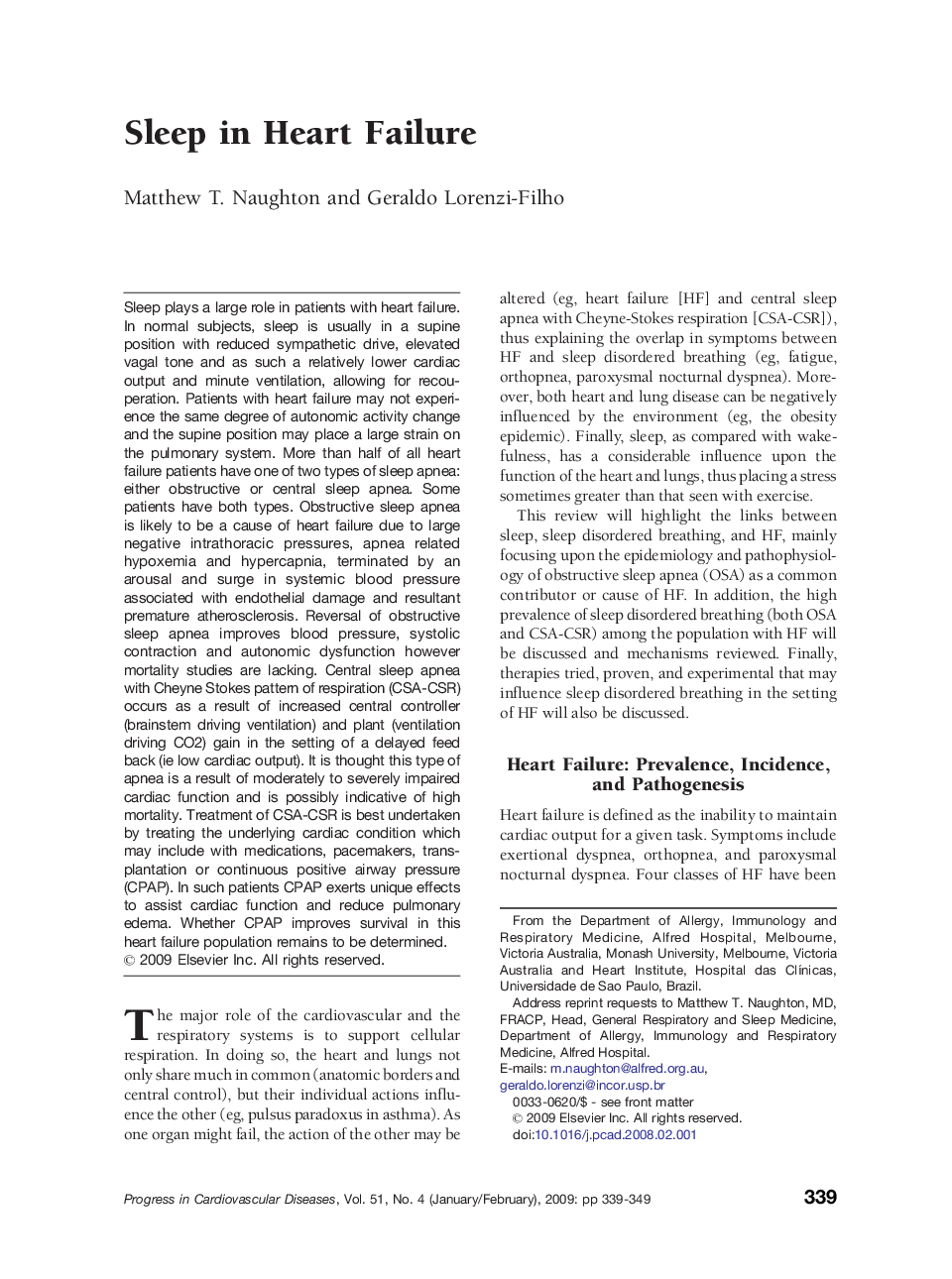| کد مقاله | کد نشریه | سال انتشار | مقاله انگلیسی | نسخه تمام متن |
|---|---|---|---|---|
| 3006996 | 1181027 | 2009 | 11 صفحه PDF | دانلود رایگان |

Sleep plays a large role in patients with heart failure. In normal subjects, sleep is usually in a supine position with reduced sympathetic drive, elevated vagal tone and as such a relatively lower cardiac output and minute ventilation, allowing for recouperation. Patients with heart failure may not experience the same degree of autonomic activity change and the supine position may place a large strain on the pulmonary system. More than half of all heart failure patients have one of two types of sleep apnea: either obstructive or central sleep apnea. Some patients have both types. Obstructive sleep apnea is likely to be a cause of heart failure due to large negative intrathoracic pressures, apnea related hypoxemia and hypercapnia, terminated by an arousal and surge in systemic blood pressure associated with endothelial damage and resultant premature atherosclerosis. Reversal of obstructive sleep apnea improves blood pressure, systolic contraction and autonomic dysfunction however mortality studies are lacking. Central sleep apnea with Cheyne Stokes pattern of respiration (CSA-CSR) occurs as a result of increased central controller (brainstem driving ventilation) and plant (ventilation driving CO2) gain in the setting of a delayed feed back (ie low cardiac output). It is thought this type of apnea is a result of moderately to severely impaired cardiac function and is possibly indicative of high mortality. Treatment of CSA-CSR is best undertaken by treating the underlying cardiac condition which may include with medications, pacemakers, transplantation or continuous positive airway pressure (CPAP). In such patients CPAP exerts unique effects to assist cardiac function and reduce pulmonary edema. Whether CPAP improves survival in this heart failure population remains to be determined.
Journal: Progress in Cardiovascular Diseases - Volume 51, Issue 4, January–February 2009, Pages 339–349